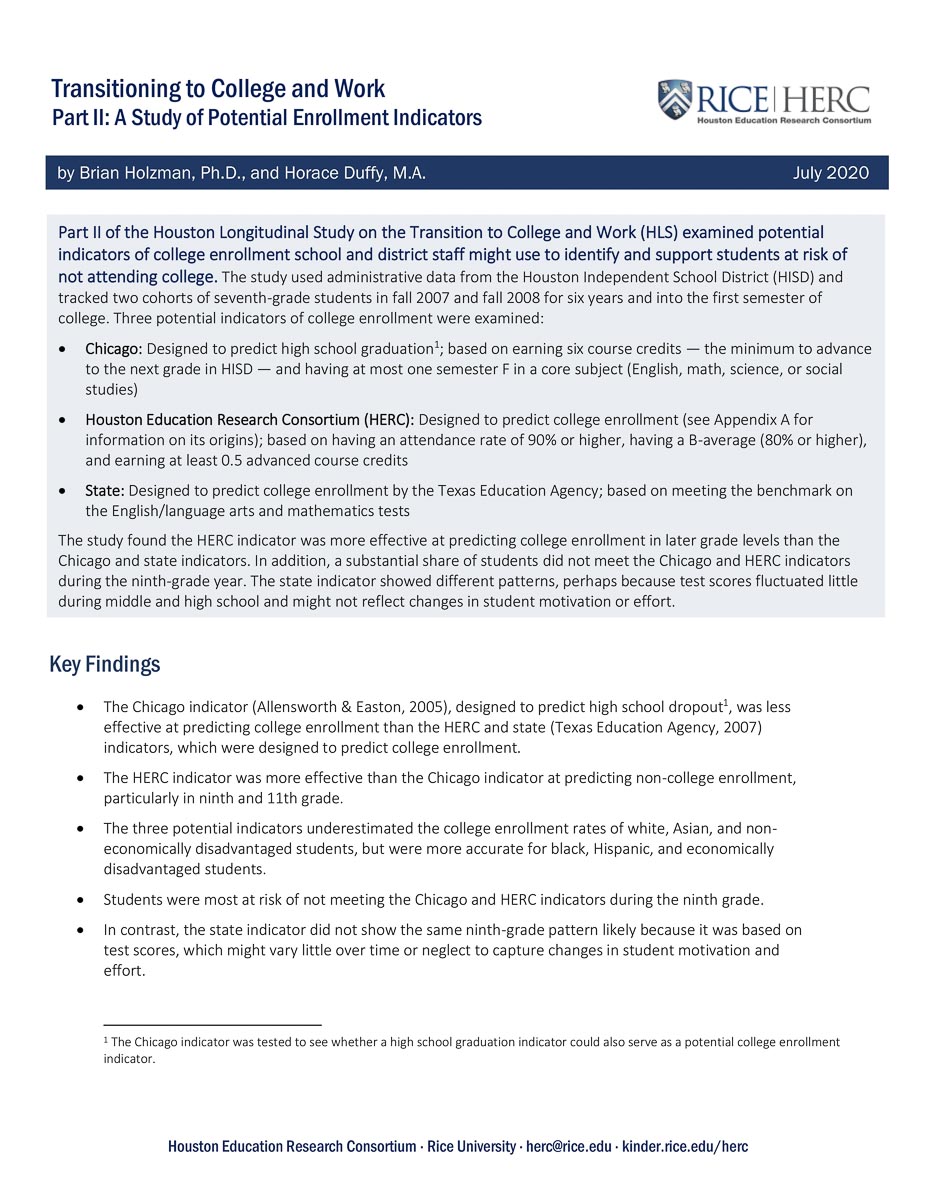Part 2 of the Houston Longitudinal Study on the Transition to College and Work (HLS) examined potential indicators of college enrollment school and district staff might use to identify and support students at risk of not attending college. The study used administrative data from the Houston Independent School District (HISD) and tracked two cohorts of seventh-grade students in fall 2007 and fall 2008 for six years and into the first semester of college. Three potential indicators of college enrollment were examined:
- Chicago: Designed to predict high school graduation1; based on earning six course credits — the minimum to advance to the next grade in HISD — and having at most one semester F in a core subject (English, math, science, or social studies)
- Houston Education Research Consortium (HERC): Designed to predict college enrollment (see Appendix A for information on its origins); based on having an attendance rate of 90% or higher, having a B-average (80% or higher), and earning at least 0.5 advanced course credits
- State: Designed to predict college enrollment by the Texas Education Agency; based on meeting the benchmark on the English/language arts and mathematics tests
The study found the HERC indicator was more effective at predicting college enrollment in later grade levels than the Chicago and state indicators. In addition, a substantial share of students did not meet the Chicago and HERC indicators during the ninth-grade year. The state indicator showed different patterns, perhaps because test scores fluctuated little during middle and high school and might not reflect changes in student motivation or effort.





